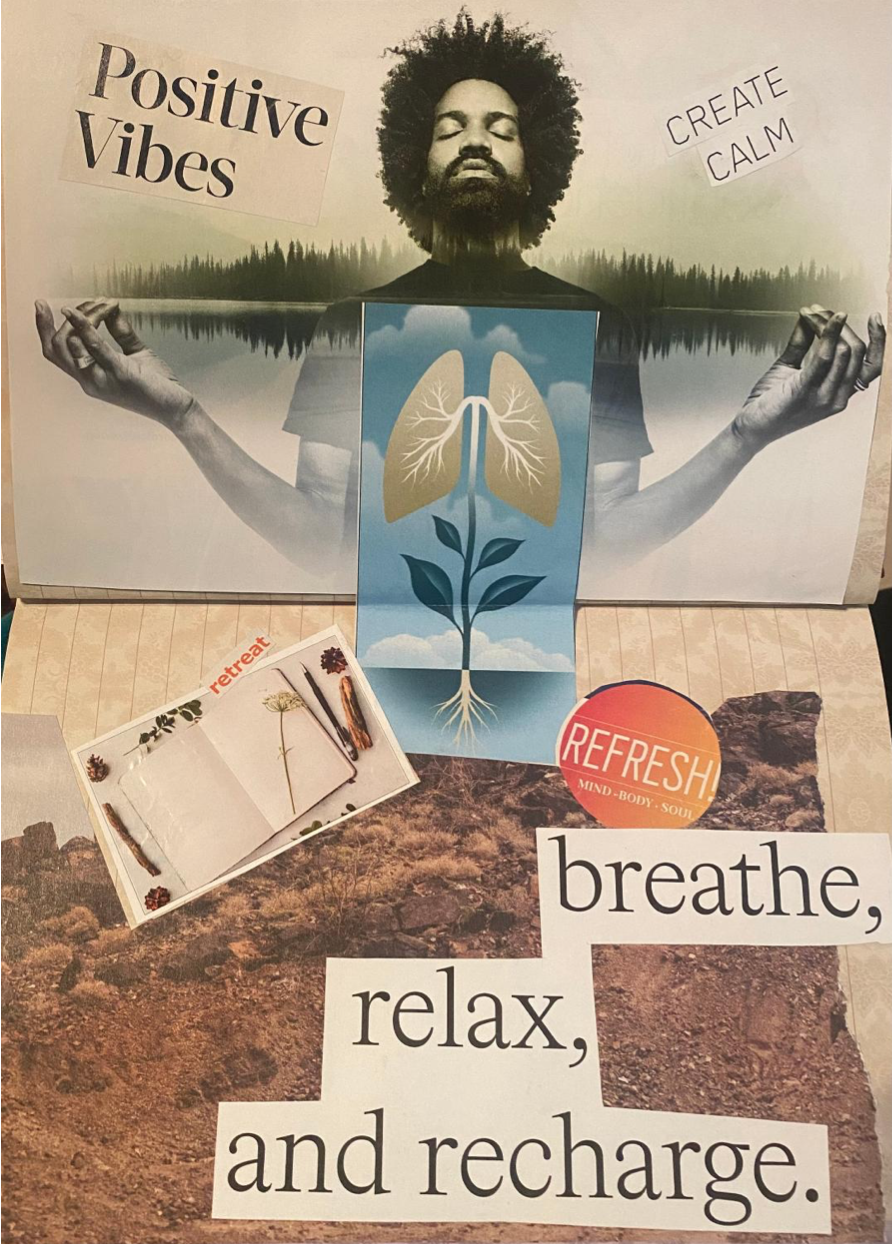What is Art Therapy? Fact Sheet
Share this fact sheet as a hand-out to help raise awareness about art therapy and the work art therapists do with their clients and communities they serve.
What is Art Therapy?
Art therapy is a mental health profession that enriches the lives of individuals, families, and communities through active art-making, creative process, applied psychological theory, and human experience within a psychotherapeutic relationship.
Especially when people are struggling, facing a challenge, or even a health crisis —their own words or language fails them. During these times, an art therapist can help clients express themselves in ways beyond words or language. Art therapists are trained in art and psychological theory and can help clients integrate nonverbal cues and metaphors that are often expressed through the creative process.
Art therapists work with individuals of all ages, including children who are experiencing behavioral challenges or those with Autism Spectrum Disorder. They assist people and caregivers in health crises; victims of violence or other trauma—including our military service members and student survivors of mass shootings; older adults with dementia; and anyone that needs help coping with life’s challenges.
Who are Art Therapists?
Art therapists are credentialed mental health professionals. They are trained in a broad range of psychological theory and ways to use art media and creative processes to help people cope with mental health challenges. Art therapists hold Masters–level or higher degrees. Look for a therapist with the credentials ATR (art therapist registered) or ATR–BC (board–certified art therapist registered).
Where do Art Therapists Work?
Art therapists serve diverse communities in different settings—from medical institutions like hospitals, cancer treatment centers and psychiatric facilities, to wellness centers and schools. Many art therapists have independent practices. They also help support individuals and communities after a crisis or traumatic event.
Why is Art Therapy Effective?
Art therapy is particularly effective during times of crisis, changes in circumstance, trauma, and grief.
According to research, art therapy helps people feel more in control of their own lives, and helps relieve anxiety and depression, including among cancer patients, tuberculosis patients in isolation, and military veterans with PTSD. In addition, art therapy assists in managing pain by moving mental focus away from the painful stimulus.
Do You Have to be Good at Art?
You don’t have to be an artist or even “artsy” to make art. Everyone is creative – and we all remember making art as children.
In art therapy sessions, your art therapist may encourage you to try different art media such as color pencils, paints, clay, and collage. Sometimes non–traditional art materials (e.g. tree branches and leaves) are intentionally introduced to you in order to expand your creative expression. You may also explore different styles of expression, using doodling, abstract designs, and contour drawing. Art therapists are trained to facilitate a type of art making for your specific needs.
To experience the process of art therapy, it’s important to work with a trained and credentialed art therapist. Find an art therapist near you on AATA’s Art Therapist Locator.

“This collage represents the healing space I am intentional in creating for each of my clients.” — Natasha Green, MA, ATR
“Visual art helps give choices back to the patients who have lost the ability to make many of the choices in their care and empowering the patient to make decisions in art, to do things in art, to observe things in art, is important to their ability to cope with their circumstances.”
— Valerie Hanks, ATR-P, art therapist at UAB Hospital and Children’s Hospital of Alabama
“Especially among my children and teen clients, I am always inspired by their willingness to use art materials to discover novel and meaningful ways to create their own emotional language… experimenting with mediums that help them resonate with their feelings more clearly, and connect verbal and non- verbal language together.”
— Matthew Chernaskey, MA, ATR, art therapist at an outpatient clinic with children, teens, and families
“Art-making encourages self-exploration and expression. It encourages more vulnerability simply through art being an expression of oneself. By externalizing their emotions, thoughts, and behaviors through art, they may feel less judgment and/or shame toward themselves. Art making may give clients an increased sense of control over what they disclose.”
— Natasha Green, MA, ATR, art therapist in private practice at Green Amethyst Art Therapy
“Visual arts offer veterans suffering from PTSD a nonthreatening alternative to compose in images what is inexpressible to them with words. It is a way in and often the first step to organize and express overwhelming feelings and sensations they experience. Most importantly, their own artwork becomes the narrative to tell their story and is the foundation that we use to begin therapy.”
— Rosemarie Rogers, ATR-BC, LCAT, art therapist with Veterans Affairs
